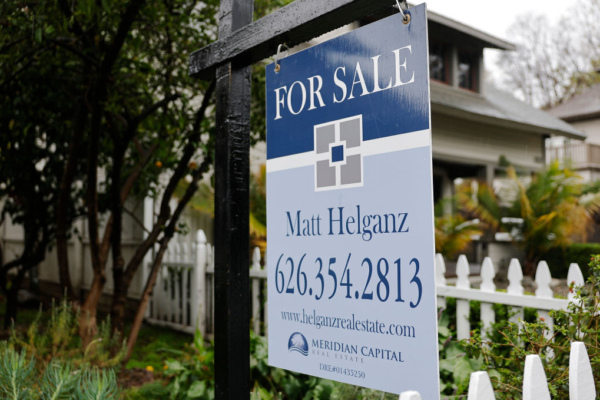During the summer, which is the peak season for real estate sales, many families choose to change residences. So, what is the current situation in the Los Angeles real estate market? Roy Zhang, a seasoned real estate agent in Los Angeles, has observed that the local housing sales volume is generally declining, indicating a gradual slowdown in the real estate market, with some areas transitioning towards a buyer’s market.
According to a report titled “Los Angeles Real Estate Market: 2025-2026 Forecast and Trends” released last week by Norada Real Estate Investment, the real estate market in Southern California is showing signs of moderation. The overall sales volume has decreased by 7.6% compared to the same period last year, with Los Angeles housing sales down by 7.9% year-on-year. In contrast, the national real estate sales volume decreased by 0.7%. This indicates that the downturn in the Los Angeles real estate market far exceeds that of other markets across the United States.
In a recent interview, Roy noted that the trends highlighted in various reports like Norada’s are evident in the Los Angeles real estate market. Currently, there is a noticeable increase in the number of sellers, leading to a significant rise in inventory compared to last year. Additionally, there has been an increase in the number of homes being sold at reduced prices. In some small cities in the area, the real estate market has a feeling of “high price, low demand,” especially for homes priced above $2 million, where real estate agents are experiencing a decrease in potential buyers.
As per the report, in the favored Irvine area among the Chinese community, the median price from January to May this year increased by 4% compared to the same period last year, but existing home sales decreased by 26%. In Mission Viejo, a small city in Orange County, sales decreased by 51%; Santa Ana decreased by 15%, Fountain Valley by 9%, and Fullerton by 6%. Overall, sales volumes are generally down year-on-year in the area, with only a few exceptions such as Brea, which saw a 51% increase in homes sold from January to May, and Costa Mesa, a seaside town where sales grew by 17%. The overall prices in Orange County increased by 2%, while sales volumes declined by 2%.
In Los Angeles County, existing home sales remained stable from January to May, with a median sales price increase of 8%. However, there are variations among the cities within the county. Malibu witnessed the most significant drop in sales by 45%, Altadena by 57%. Roy believes this is related to the wildfires at the beginning of the year, as there were fewer properties listed for sale and fewer buyers in subsequent months.
Both Arcadia and Rowland Heights, favored by the Chinese population in Los Angeles County, experienced a 29% and 27% drop in sales, respectively. Despite the decline in sales, both cities showed an increase in median sales prices, with Arcadia up by 5% and Rowland Heights by 8%.
Roy noted a trend of “slower homes selling.” In Los Angeles County, homes are taking an average of 23 days to sell after listing, a 24% increase from the same period last year; in San Bernardino County, it takes 29 days, a 31.8% increase; in Riverside County, it takes 38 days, a 26.7% increase compared to last year.
Comparatively, housing prices in Southern California are much higher than in other areas in the United States, surpassing the affordability of the average resident.
According to data collected by Roy, the median home price in Orange County is $1.45 million, requiring an annual income of $373,000 to afford a median-priced home, with only 12% of local families meeting this criteria, down from 26% five years ago. In the most affordable San Bernardino County, with a median house price of around $500,000, a household would need an income of $128,000 to afford a home, acceptable by only 28% of families. In Riverside County, residents would need an income of $164,800 to purchase a home, which only 20% of households hit this threshold.
Typically, an Unsold Inventory Index exceeding six months indicates a buyer’s market, while less than six months constitutes a seller’s market. Currently, Los Angeles has an Unsold Inventory Index of 3.9 (months), technically still in the seller’s market category. However, Roy’s observation suggests that some cities in Southern California are gradually moving towards a buyer’s market.
The Norada Real Estate Investment report identifies several factors influencing the Los Angeles real estate market, including economic uncertainties, consumer sentiments, the availability and affordability of home insurance, among others. Rising insurance costs in California, together with the difficulty in obtaining home insurance in specific regions, could impact home prices and buyer decisions. Nevertheless, there seems to be a positive shift in consumer sentiment. ◇

